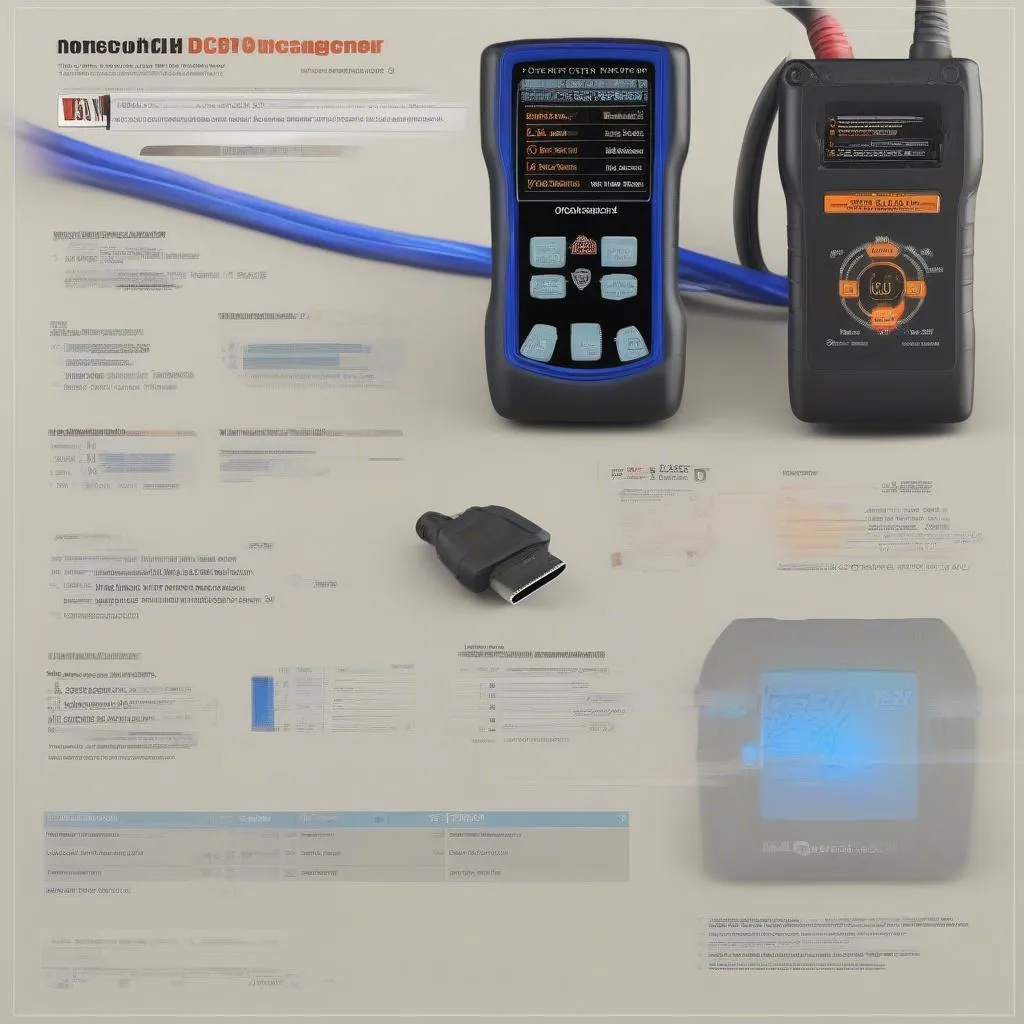Have you ever heard someone talking about “OBD” in a car repair shop, or perhaps seen the abbreviation on a diagnostic tool? If you’re a car owner, you’ve likely encountered this term, but what does it actually mean? It’s more than just a random car code – it’s the key to understanding your car’s health and performance.
Understanding the OBD System
OBD stands for On-Board Diagnostics. It’s a computer system built into modern cars that constantly monitors various engine and vehicle functions. Think of it as your car’s internal health inspector, keeping an eye on things like emissions, fuel efficiency, and even the performance of your engine’s cylinders.
Why is OBD Important?
Imagine you’re driving down the road and suddenly your car starts sputtering. Without OBD, you might be left clueless about the source of the problem. But with the OBD system, it’s like having a built-in mechanic constantly running diagnostics. When issues arise, OBD will flag them with error codes, giving you a clear indication of what’s wrong.
How OBD Works
The OBD system works by using sensors strategically placed throughout your car’s engine and other components. These sensors continuously collect data on things like engine speed, oxygen levels, and even coolant temperature. The data is sent to the car’s computer (called the Engine Control Unit or ECU), which analyzes it and looks for anomalies. If something is out of whack, the ECU stores a specific error code.
What are OBD Codes?
OBD codes are numerical or alphanumeric combinations that indicate specific issues within your car’s system. These codes are standardized across most vehicles, allowing mechanics to quickly identify the root cause of problems. For example, a code like “P0171” might point to a problem with the fuel-air mixture, while “P0300” might indicate a misfire in one or more cylinders.
The Importance of OBD for Car Owners
As a car owner, understanding OBD can be incredibly helpful. Here’s why:
- Early Detection of Problems: OBD codes alert you to potential issues before they escalate into major repairs.
- Cost Savings: By catching problems early, you can prevent further damage and potentially save money on repairs.
- Improved Performance: Understanding your car’s health through OBD codes can help you make informed decisions about maintenance and tune-ups, ensuring optimal performance.
OBD Tools: Your Window into Your Car’s Health
There are various tools available for accessing and interpreting OBD codes. These tools can range from simple Bluetooth readers to advanced professional-grade diagnostic scanners.
- Simple OBD Scanners: These tools can be plugged into your car’s OBD-II port (usually located near the steering wheel). They display basic information like engine codes and can be purchased at most auto parts stores.
- Advanced Diagnostic Scanners: These scanners offer more detailed readings and can even access live data streams from your car’s ECU. They are often used by professional mechanics.
 OBD Scanner Tool for Car Diagnostics
OBD Scanner Tool for Car Diagnostics
OBD and the Future of Automotive Repair
The OBD system has revolutionized automotive repair, providing a standardized platform for diagnostics. As technology continues to evolve, OBD is expected to play an even more crucial role in the future of car maintenance. From remote diagnostics to predictive maintenance, the possibilities are endless.
Common OBD Questions
1. Where is the OBD-II port located in my car?
The OBD-II port is typically found under the dashboard, near the steering column. If you can’t find it, consult your car’s owner’s manual for the exact location.
2. Can I clear OBD codes myself?
Yes, you can often clear OBD codes yourself using a simple OBD scanner tool. However, it’s essential to understand that simply clearing the code doesn’t solve the underlying problem. It’s important to address the root cause of the code to prevent it from reappearing.
3. What are some common OBD codes?
Some common OBD codes include:
- P0171: System Too Lean (Bank 1)
- P0300: Random/Multiple Cylinder Misfire Detected
- P0420: Catalyst System Efficiency Below Threshold (Bank 1)
- P0700: Transmission Control System (TCM) Malfunction
4. Can I use an OBD scanner for all cars?
Most OBD scanners work with vehicles manufactured after 1996 in the United States. For older vehicles or imported cars, you might need a specialized scanner.
5. How often should I check my car’s OBD codes?
It’s a good idea to check your car’s OBD codes regularly, especially if you notice any changes in performance or unusual noises. You can use an OBD scanner tool or have a mechanic run a diagnostic check.
Connect with Us!
Have any more questions about OBD or your car’s diagnostics? Don’t hesitate to reach out! We have experienced automotive technicians available 24/7 via WhatsApp: +84767531508. We’re here to help you keep your car running smoothly and efficiently.
Explore More
Want to learn more about specific aspects of OBD or how to use OBD tools? Check out these articles on our website:
- What Does OBD Mean in Business?
- OBD Connector Male
- OBD Socket Mini Cooper
- OBD Error Codes
- How to Use an OBD Tool
Stay tuned for more informative content on all things automotive! Share this article with your friends and fellow car enthusiasts to help them better understand their vehicle’s health.